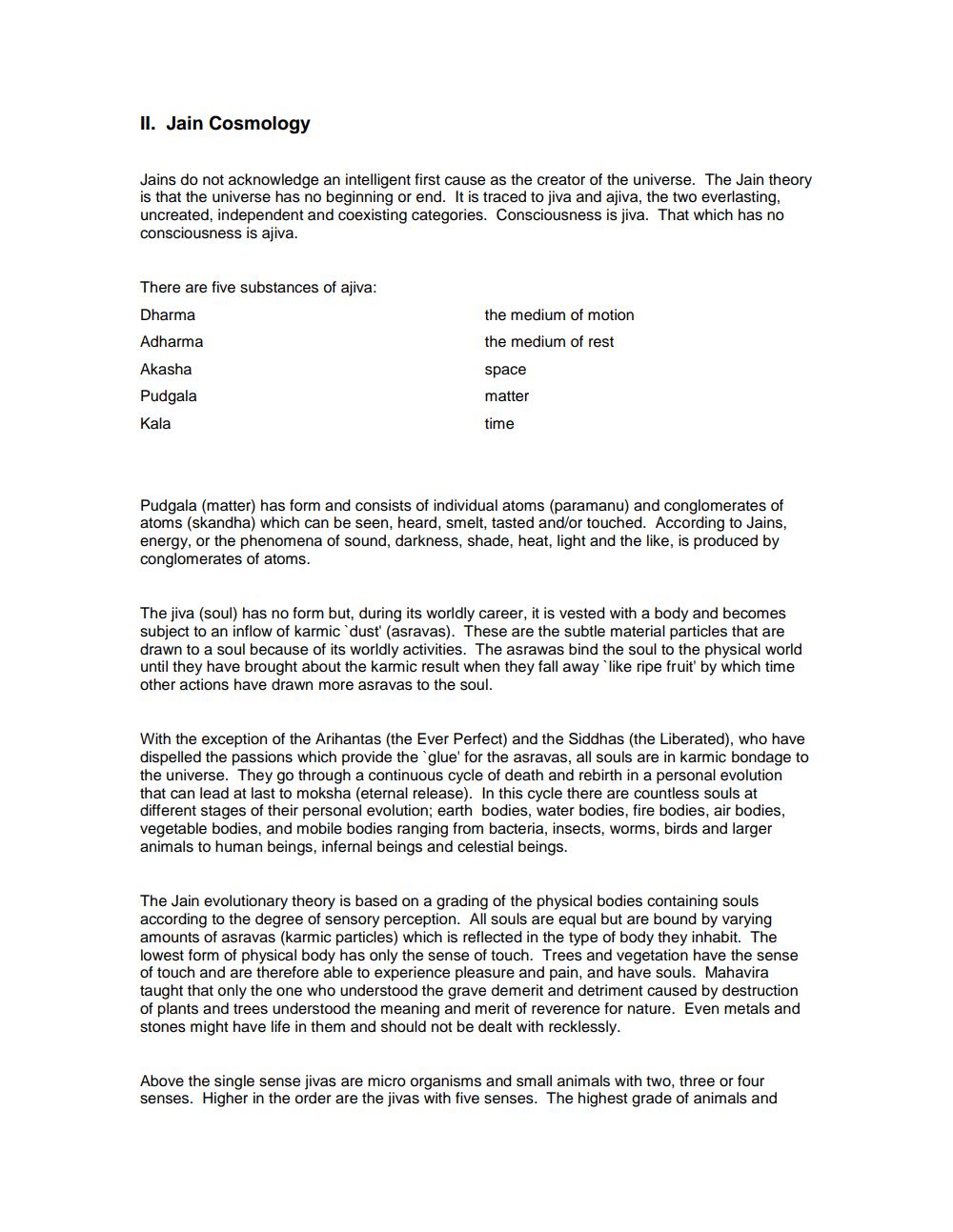________________
II. Jain Cosmology
Jains do not acknowledge an intelligent first cause as the creator of the universe. The Jain theory is that the universe has no beginning or end. It is traced to jiva and ajiva, the two everlasting, uncreated, independent and coexisting categories. Consciousness is jiva. That which has no consciousness is ajiva.
There are five substances of ajiva:
Dharma
Adharma
Akasha
Pudgala
Kala
the medium of motion the medium of rest
space
matter
time
Pudgala (matter) has form and consists of individual atoms (paramanu) and conglomerates of atoms (skandha) which can be seen, heard, smelt, tasted and/or touched. According to Jains, energy, or the phenomena of sound, darkness, shade, heat, light and the like, is produced by conglomerates of atoms.
The jiva (soul) has no form but, during its worldly career, it is vested with a body and becomes subject to an inflow of karmic `dust' (asravas). These are the subtle material particles that are drawn to a soul because of its worldly activities. The asrawas bind the soul to the physical world until they have brought about the karmic result when they fall away `like ripe fruit' by which time other actions have drawn more asravas to the soul.
With the exception of the Arihantas (the Ever Perfect) and the Siddhas (the Liberated), who have dispelled the passions which provide the `glue' for the asravas, all souls are in karmic bondage to the universe. They go through a continuous cycle of death and rebirth in a personal evolution that can lead at last to moksha (eternal release). In this cycle there are countless souls at different stages of their personal evolution; earth bodies, water bodies, fire bodies, air bodies, vegetable bodies, and mobile bodies ranging from bacteria, insects, worms, birds and larger animals to human beings, infernal beings and celestial beings.
The Jain evolutionary theory is based on a grading of the physical bodies containing souls according to the degree of sensory perception. All souls are equal but are bound by varying amounts of asravas (karmic particles) which is reflected in the type of body they inhabit. The lowest form of physical body has only the sense of touch. Trees and vegetation have the sense of touch and are therefore able to experience pleasure and pain, and have souls. Mahavira taught that only the one who understood the grave demerit and detriment caused by destruction of plants and trees understood the meaning and merit of reverence for nature. Even metals and stones might have life in them and should not be dealt with recklessly.
Above the single sense jivas are micro organisms and small animals with two, three or four senses. Higher in the order are the jivas with five senses. The highest grade of animals and




